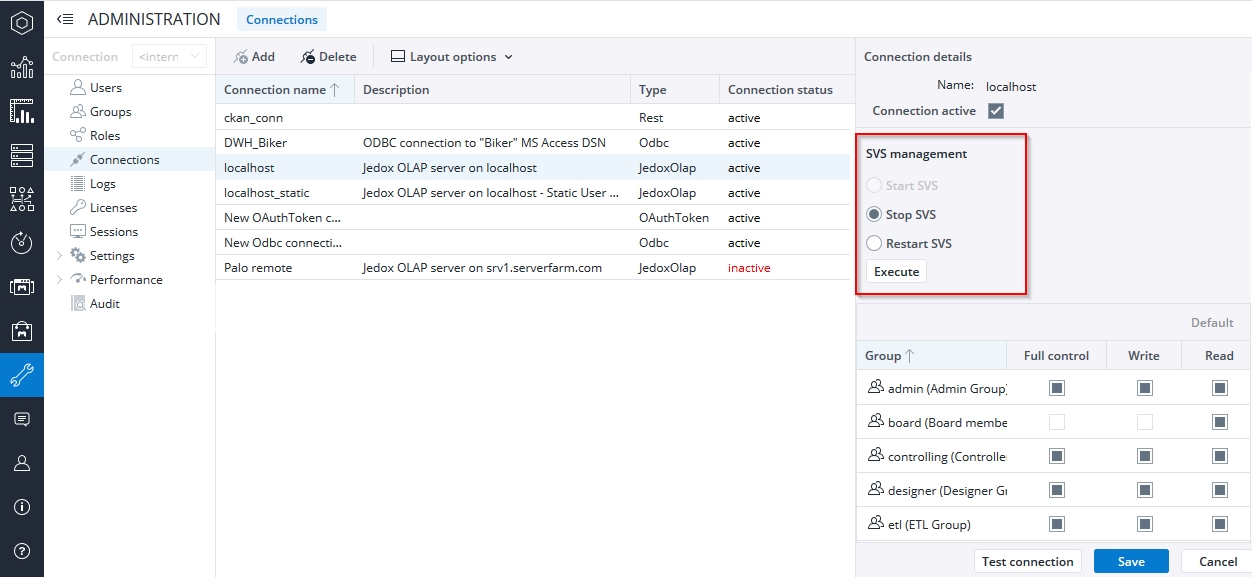Supervision Server (SVS) is a Jedox component that monitors events in the Jedox In-Memory DB (OLAP) and responds via a PHP script for the defined events. Different types of interactions result in the execution of different bits of PHP code.
By default, Supervision Server is installed on all Jedox Cloud instances.
Starting, stopping, and restarting the Supervision Server
SVS will be installed and started by default.
You can stop, start, and restart SVS without stopping JedoxSuiteMolapService. These options are available in Jedox Web > Administration > Connections when you select an active Jedox OLAP Server connection in the SVS Management tab.
Stopping disables SVS until it is restarted with the option Start SVS or until JedoxSuiteMolapService is restarted.
Available instruction options for Supervision Server
The following options of the SVS program (known as "workers") can be configured by Jedox Support.
-
Cube worker: Starts the Cube Supervisor, which reacts during the change of a cell value.
-
Dimension worker: Starts the Dimension Supervisor, which reacts during the creation, deletion, or renaming of an element in a specified dimension.
In the sep.inc.php file available in the SVS Script Editor, you can define events or refer to added scripts, to specify how the SVS should respond to the various events.
By default, the file sep.inc.php has the following entry:
<?php
include './sample_scripts/sep.inc.default.php';
?>
In the file sep.inc.default.php basic responses are given to all possible events. For activation, however, they must be programmed with an appropriate PHP code. Make sure you include only one file.
Within the script editor you can review the entries of such a SVS script file and adjust them, if necessary. Subsequently, this file can be added as an include statement in the sep.inc.php file.
For the changes to take effect, restart the Supervision Server.
Parameter-passing mechanism
The PHP API functions support two different parameter-passing mechanisms.
The first mechanism uses the specification function(connection,database,…), the second mechanism uses the specification function(connection-resource-string,…). For Supervision Server scripts, the second mechanism must be used. The connection object is managed internally. The connection-resource-string has the form SupervisionServer/$database, where $database is the name of the database you are using.
Debugging Supervision Server Scripts
The Supervision Server includes a logging mechanism that can be used for debugging purposes. Use the function sep_log($string) to write to the Supervision (svs) log file. In general, the Supervision log is a good place to look if things go wrong, as exceptions thrown by the PHP extension are monitored there.
Related articles:
- Supervision Server Script Editor
- Functional Description of Supervision Server
- Supervision Server Event Handlers
- Functional Description of Supervision Server
- Supervision Server Samples
- Supervision Server for Drilldown and Drillthrough
- SVS Cube Supervisor
Updated October 14, 2025
